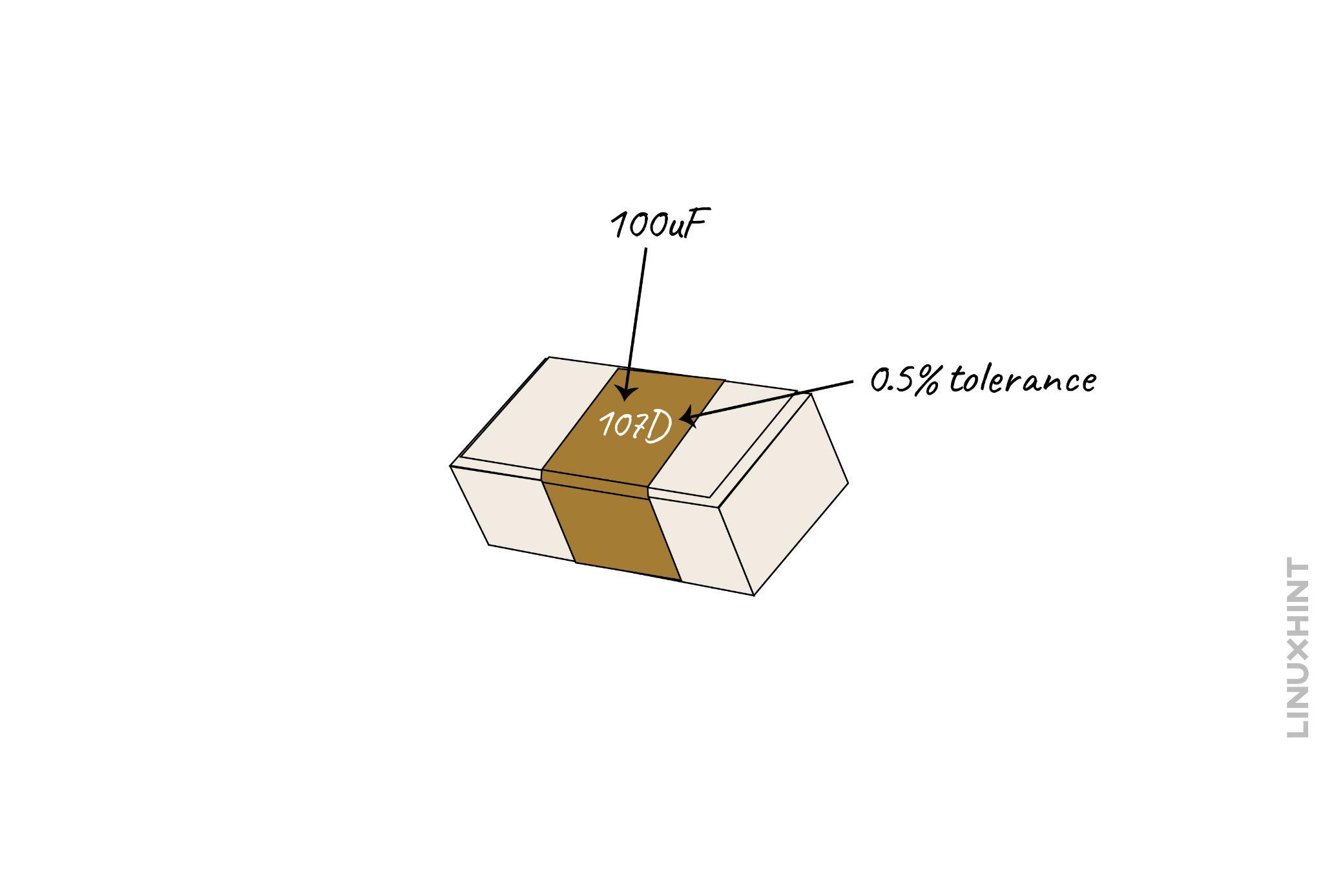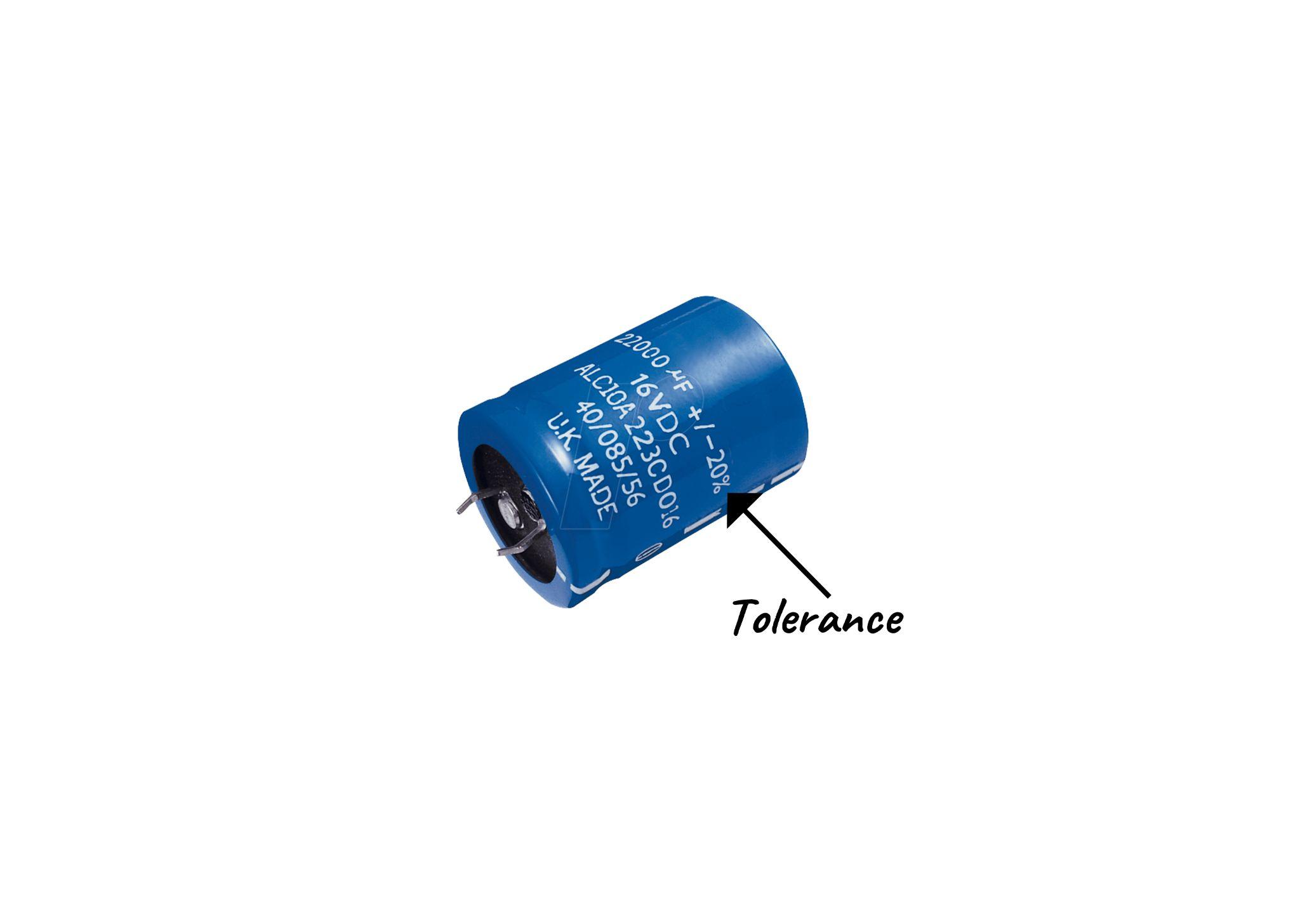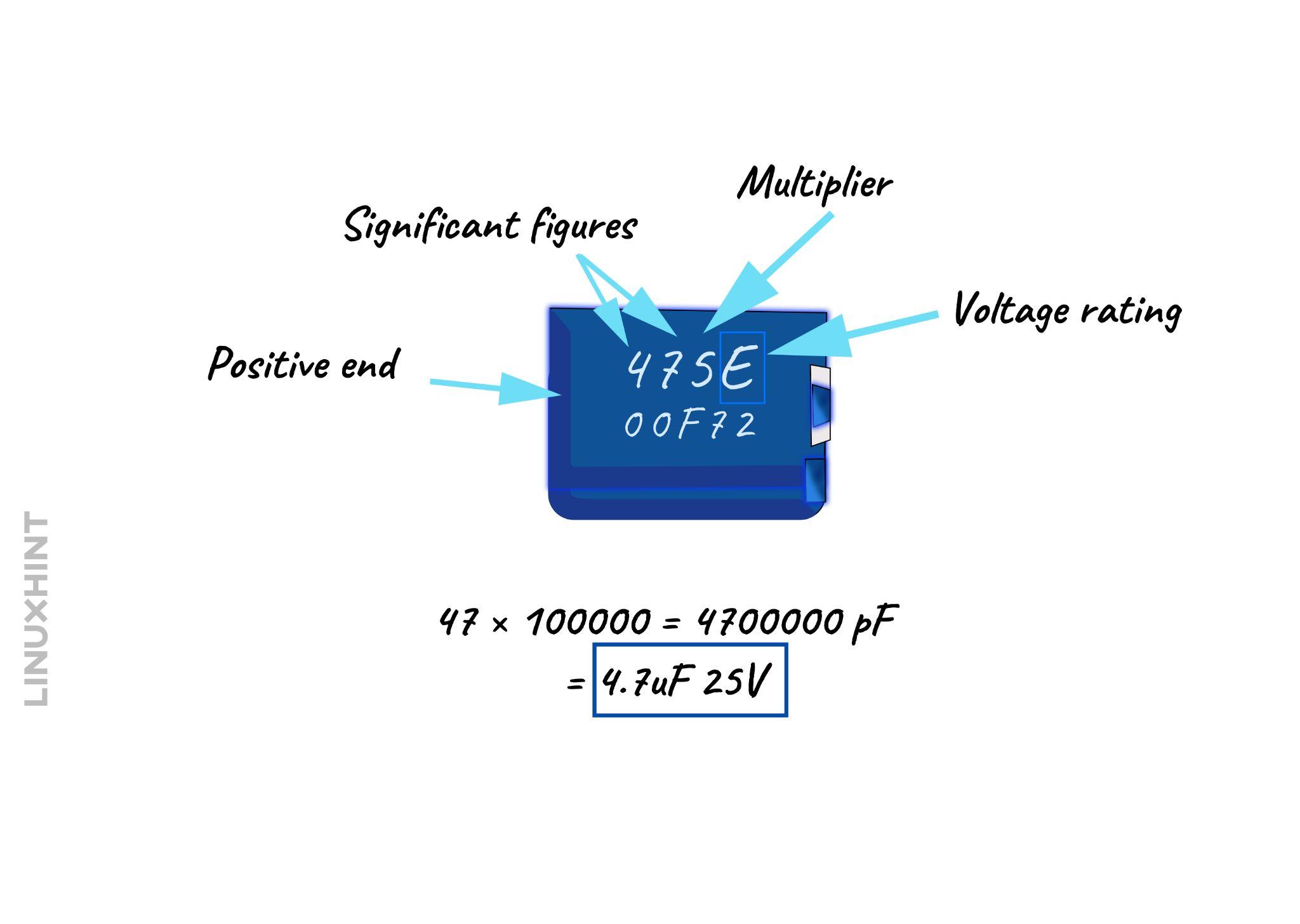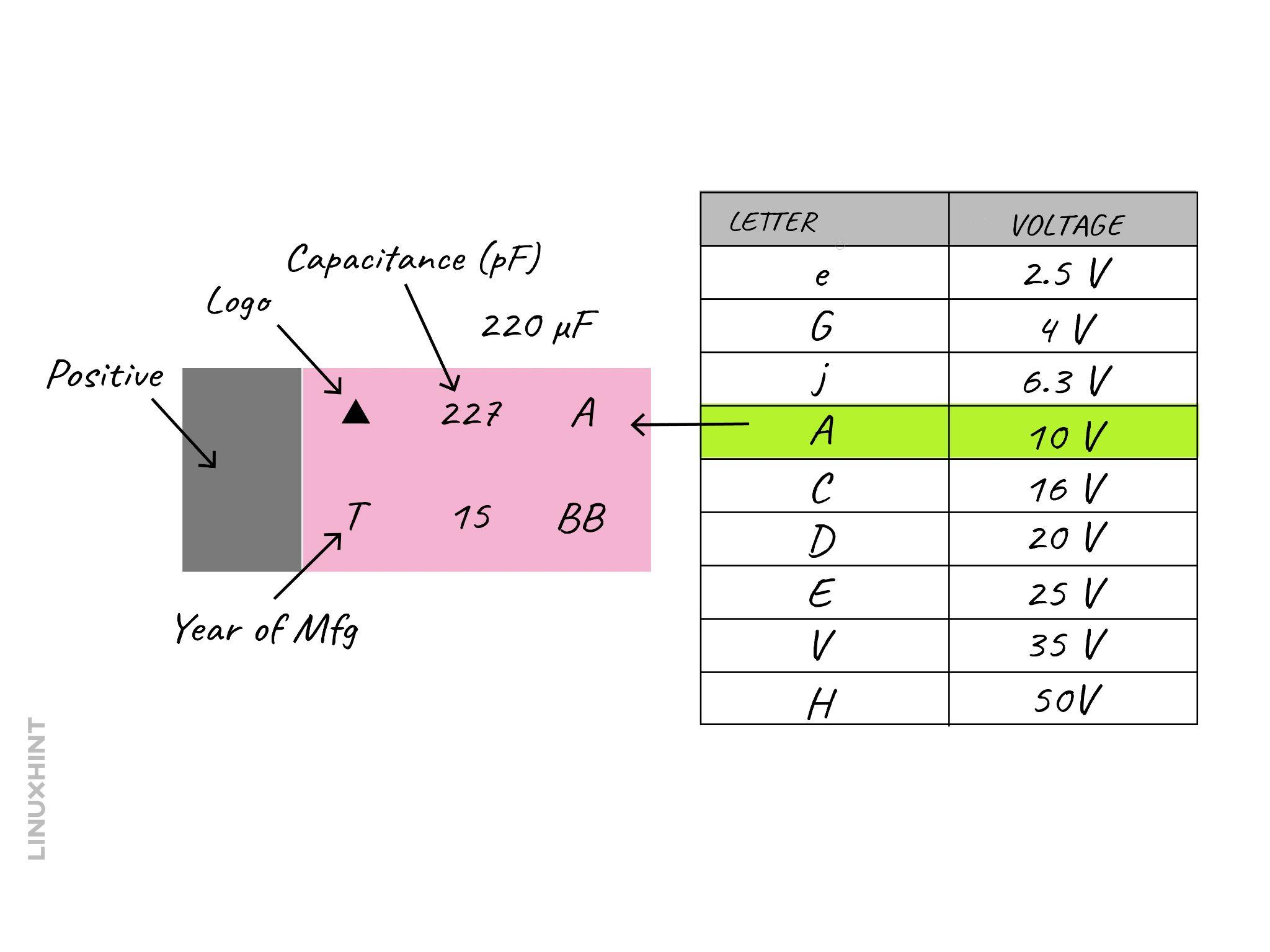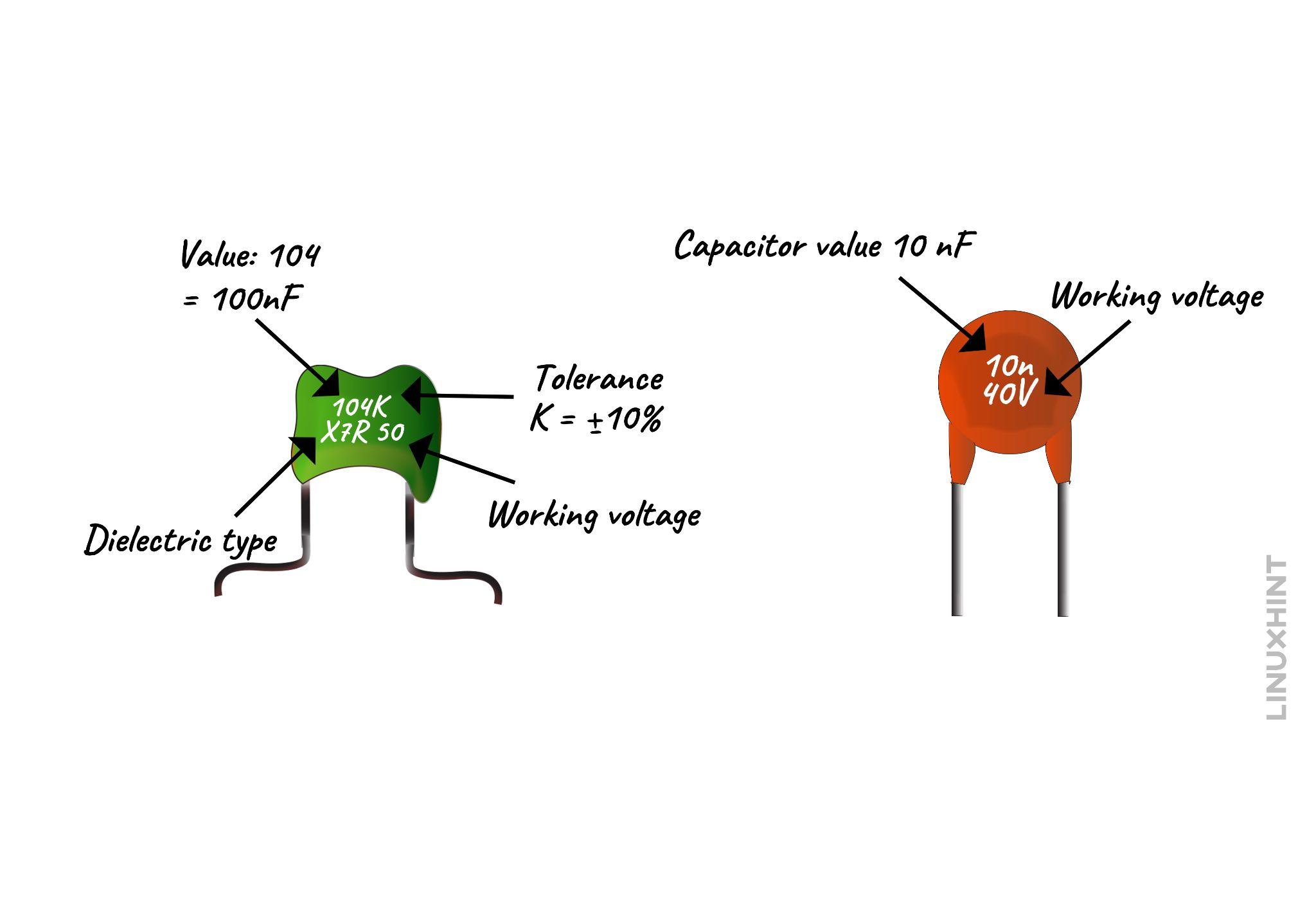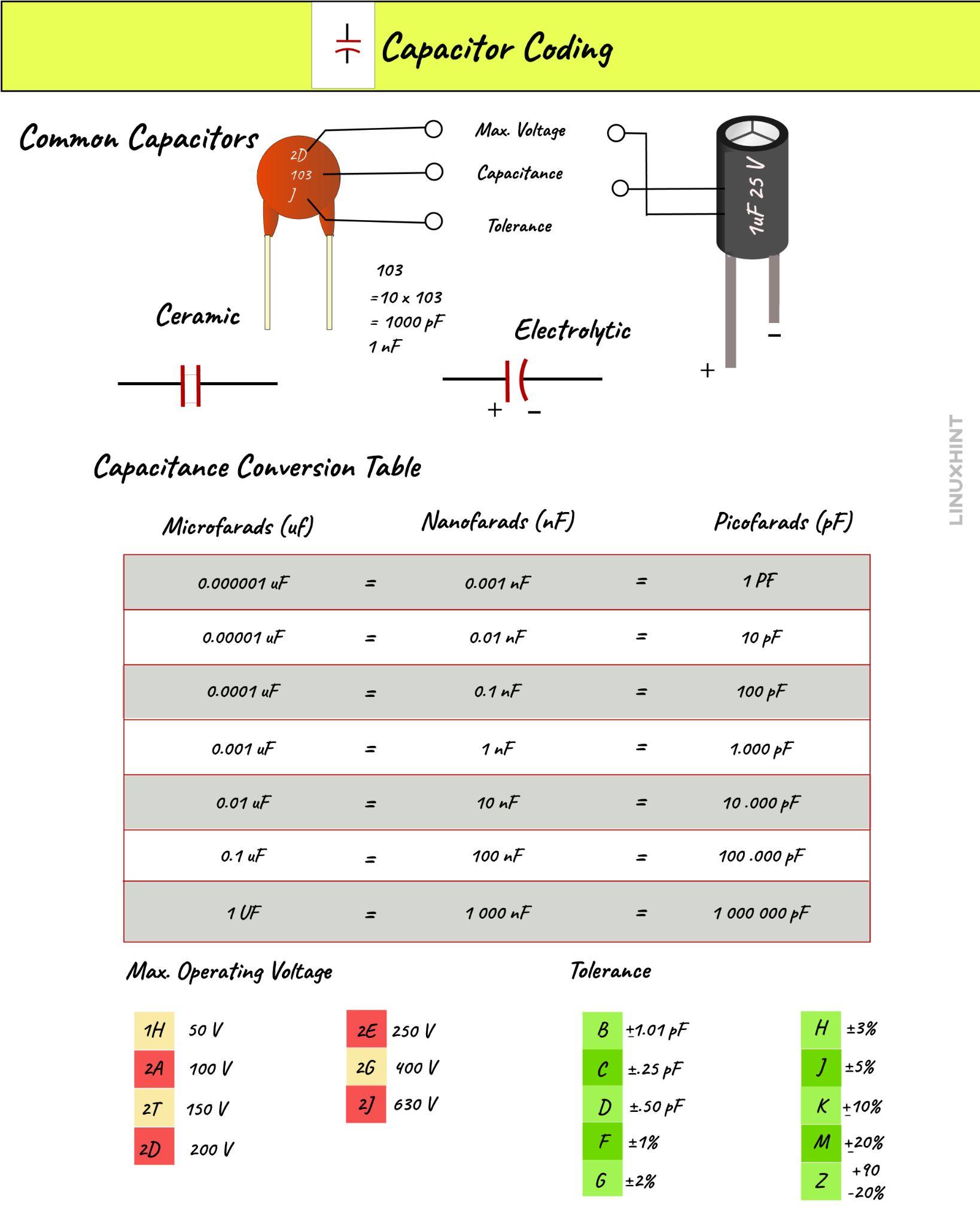Outline:
How to Identify Capacitor
The specifications of a capacitor include its capacitance, tolerance, temperature range, and range for the voltage it can bear which is also called working voltage. Some capacitors include CM or DM in their code, and this means it is a military-grade capacitor and in that case, consult the military-grade capacitor specification chart.
The specifications of capacitors vary based on their internal composition, which includes dielectric, material of electrodes, and electrolyte. To identify the specifications of a capacitor we need to divide them based on their configuration because of the variation in the codes, shapes, and sizes. There are three major specifications of the capacitors that are: capacitance, voltage, and tolerance. The table for voltage codes is given below:
| Code | Voltage | Code | Voltage | Code | Voltage | Code | Voltage |
| 0E | 2.5VDC | 1A | 10 VDC | 2A | 100 VDC | 3L | 1.2 KVDC |
| 0G | 4.0VDC | 1C | 16 VDC | 2Q | 110 VDC | 3B | 1.25 KVDC |
| 0L | 5.5VDC | 1D | 20 VDC | 2B | 125 VDC | 3N | 1.5 KVDC |
| 0J | 6.3VDC | 1E | 25 VDC | 2C | 160 VDC | 3C | 1.6 KVDC |
| 0K | 80VDC | 1V | 35 VDC | 2Z | 180 VDC | 3D | 2 KVDC |
| 1G | 40 VDC | 2D | 200 VDC | 3E | 2.5 KVDC | ||
| 1H | 50 VDC | 2P | 220 VDC | 3F | 3 KVDC | ||
| 1J | 63 VDC | 2E | 250 VDC | 3G | 4 KVDC | ||
| 1M | 70 VDC | 2F | 315 VDC | 3H | 5 KVDC | ||
| 1U | 75 VDC | 2V | 350 VDC | 3I | 6 KVDC | ||
| 2G | 400 VDC | 3J | 6.3 KVDC | ||||
| 2W | 450 VDC | 3U | 7.5 KVDC | ||||
| 2J | 630 VDC | 3K | 8 KVDC | ||||
| 2K | 800 VDC | 4A | 10 KVDC |
Below the image shows two capacitors having a code printed on them their rated voltage will be:
The codes for the values of tolerance are given below:
| Code | Tolerance | Code | Tolerance |
| A | ± 0.05 | K | ± 10 |
| B | ± 0.1 | L | ± 15 |
| C | ± 0.25 | M | ± 20 |
| D | ± 0.5 | N | ± 30 |
| E | ± 0.5 | P | –0%, +100% |
| F | ± 1 | S | –20%, +50% |
| G | ± 2 | W | –0%, +200% |
| H | ± 3 | X | –20%, +40% |
| J | ± 5 | Z | –20%, +80% |
In small capacitors like tantalum and ceramic capacitors, you will always find the code having three numbers. Among these numbers the first two will be the capacitance and the third one will be the prefix that is the multiplier, here is the table for it:
| Number | Multiplier |
| 0 | 1 |
| 1 | 10 |
| 2 | 100 |
| 3 | 1000 |
| 4 | 1000 0 |
| 5 | 1000 00 |
| 6 | 1000 000 |
On the surface mount capacitors where the space is limited, usually to show the decimal point R letter is used. If the written code is 4R1 then it means that the value is 4.1:
Aluminum Electrolytic Capacitors
These capacitors have an oxide layer as a dielectric that is sprayed onto its electrodes, and it could be aluminum metal oxide. There are a variety of ways in which the specifications of a capacitor are printed on it.
Polarity
These capacitors are polarized which means that if connected in the opposite polarity it can be damaged. Usually, these capacitors have only one side marked like this:
This means that this side has a negative terminal so when you see there are such markings for the polarity, then it means that this is a polarized capacitor. Some surface-mount capacitors can have different marking designs to show the polarity of the capacitor:
Some capacitors may have polarity signs printed on the metal body right next to the terminals. Moreover, in some capacitors, the terminals are colored using the same color code used for live and ground wire. Some capacitors do not have the markings for the terminals, but the polarity can be determined by the length of its terminals. The length of the positive terminal is larger than that of the negative terminal:
 Capacitance
Capacitance
The unit for capacitance is farads and to simplify the values of capacitance there are different prefixes used like micro, pico milli, and nano. Some capacitors have mentioned the prefix along with the prefix and the unit of capacitance.
On surface-mount capacitors the space is limited so only the value is written, in that case, the prefix can be assumed as micro:
Voltage Rating
Another specification mentioned on the capacitor is the voltage rating under which the capacitor will operate to its full potential. Usually, one fixed voltage is printed in the capacitor but in the case of bigger capacitors a voltage range is given:
Some of the electrolytic capacitors come with voltage values written in the form of codes as in the image below the first capacitor has the code C which means it has a rated voltage of 16V:
 Tolerance
Tolerance
Just like resistors capacitors also have tolerance but only for those whose capacitance is low, it is basically the range under which the capacitance can vary. So for tolerance there is a code printed on the capacitors and if there is no code present then it means the tolerance lies between ± 20% to ±80 %. Here is an example of a capacitor having a four-letter code printed on it that 107D and in that case, the capacitance will be 100 µF and the tolerance will be 0.5%:
Sometimes the value of tolerance is already mentioned on the capacitor like this:
Temperature
The temperature in the surroundings of the capacitor greatly affects the working of the capacitor, so normally the temperature range is printed on the capacitor:
Tantalum Capacitors
Like the aluminum capacitors, these are also polarized but instead of having aluminum in their composition they have tantalum. These capacitors have higher capacitance and low operating voltage which look like this:
The specifications of the tantalum capacitors can also be written in other ways, as in the image below:
Ceramic Capacitors
The ceramic capacitors have a dielectric made from ceramic materials, they have comparatively lower capacitance and are non-polarized which means that they can be used in AC circuits. The rate voltage ranges from a few volts up to kilo volts, these types of capacitors look like this:
Now, to further sum up how the capacitor specifications can be interpreted, here is an image that gives the overview:
Conclusion
Capacitor specification in any circuit is based on the respective circuit requirement, the specification includes its capacitance (capacity to store charge), working voltage, tolerance temperature, and internal composition. The big-size capacitors have their specifications printed on them clearly whereas the small-size capacitors present their specifications in the form of codes that are printed on them due to the limitation of space. So, to crack the code there are specified tables for tolerance, voltage and capacitance.

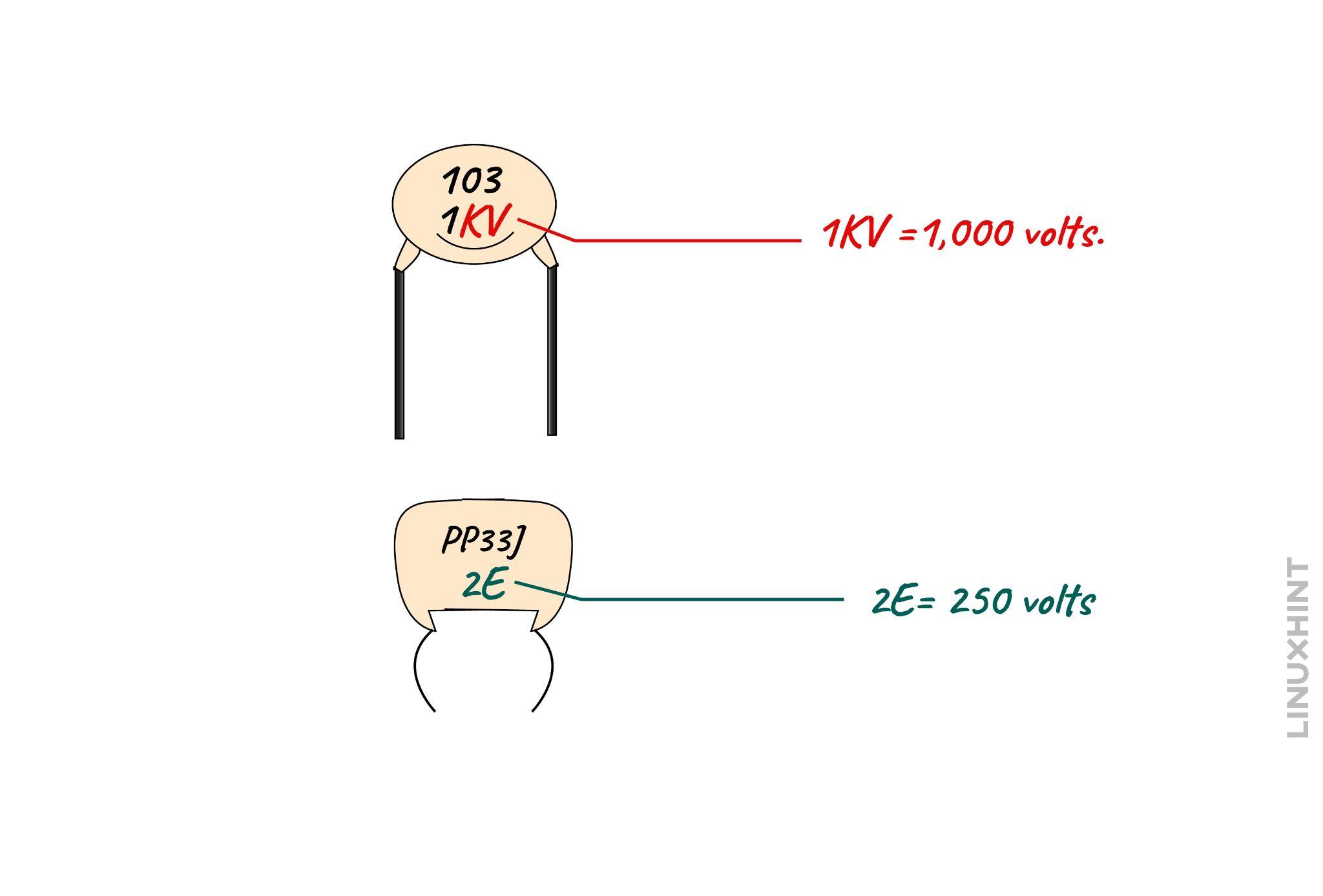
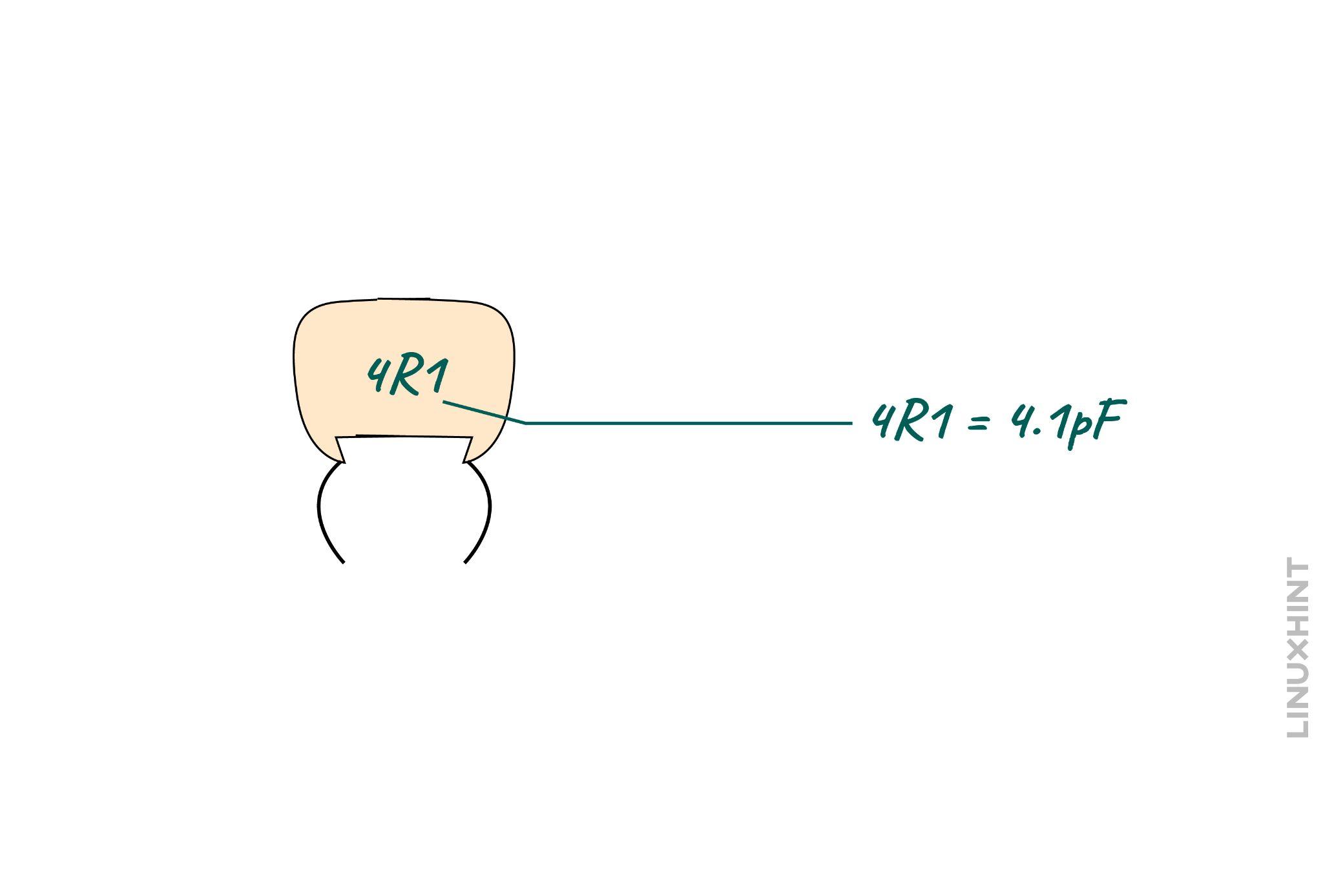
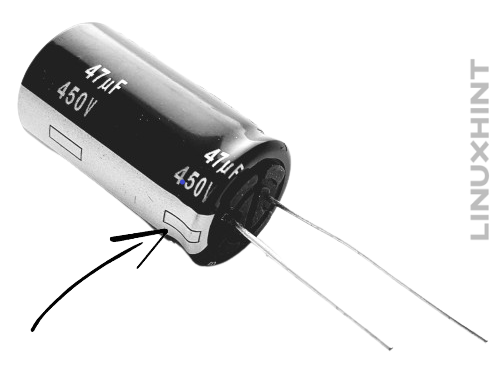
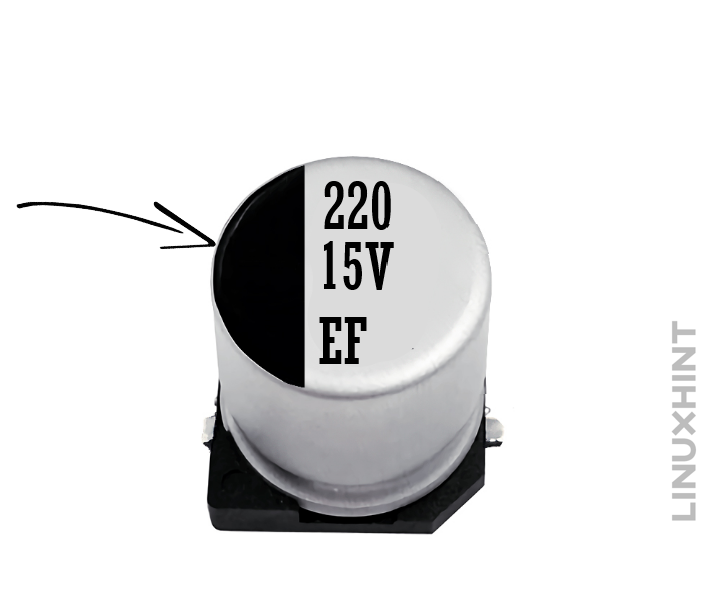
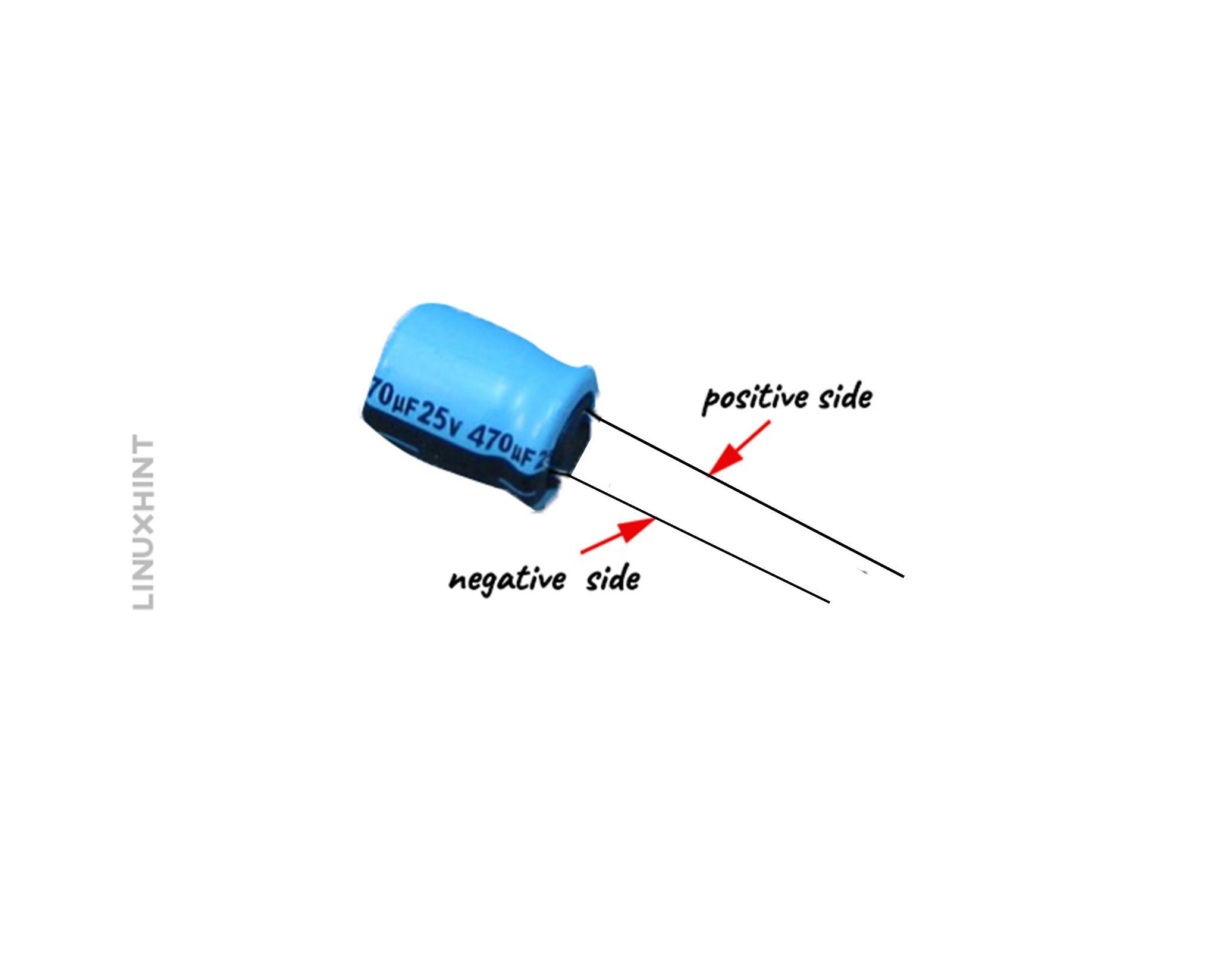 Capacitance
Capacitance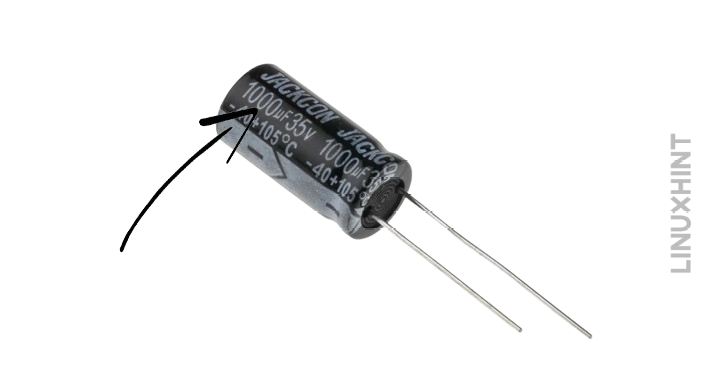
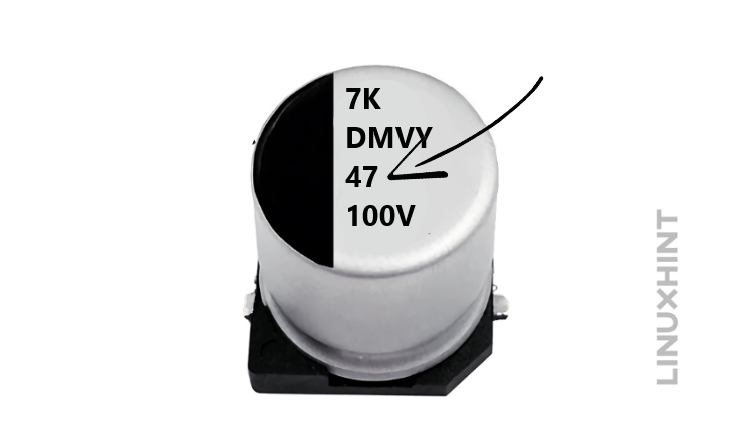
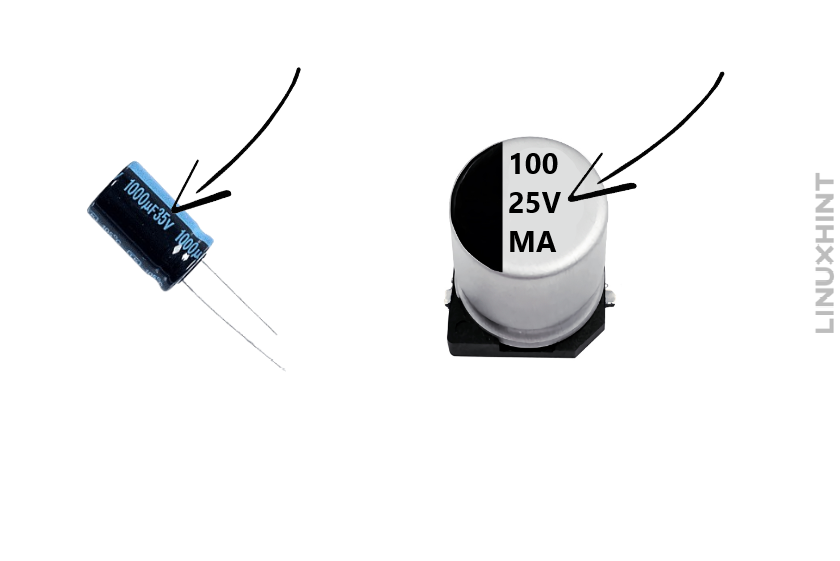
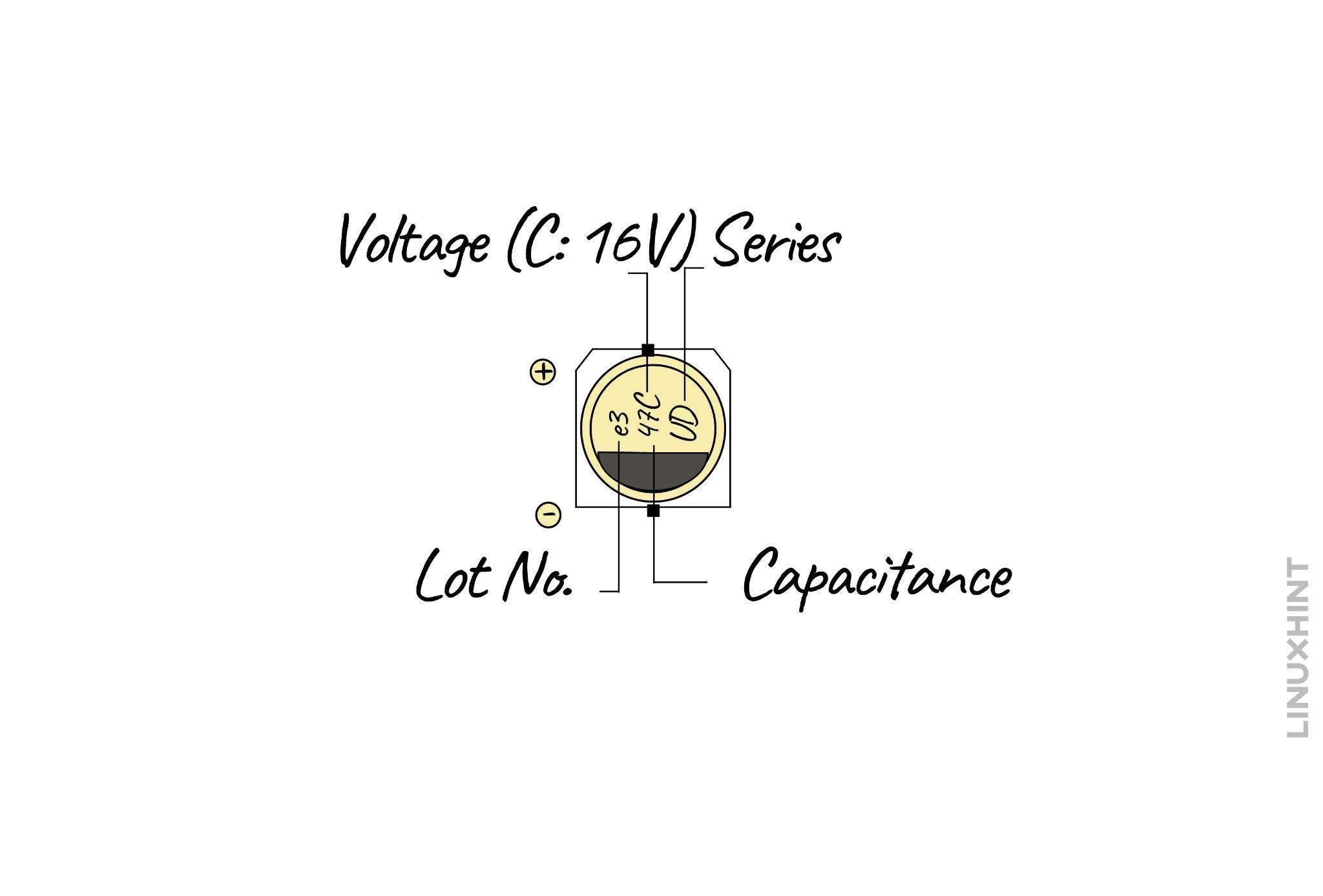 Tolerance
Tolerance